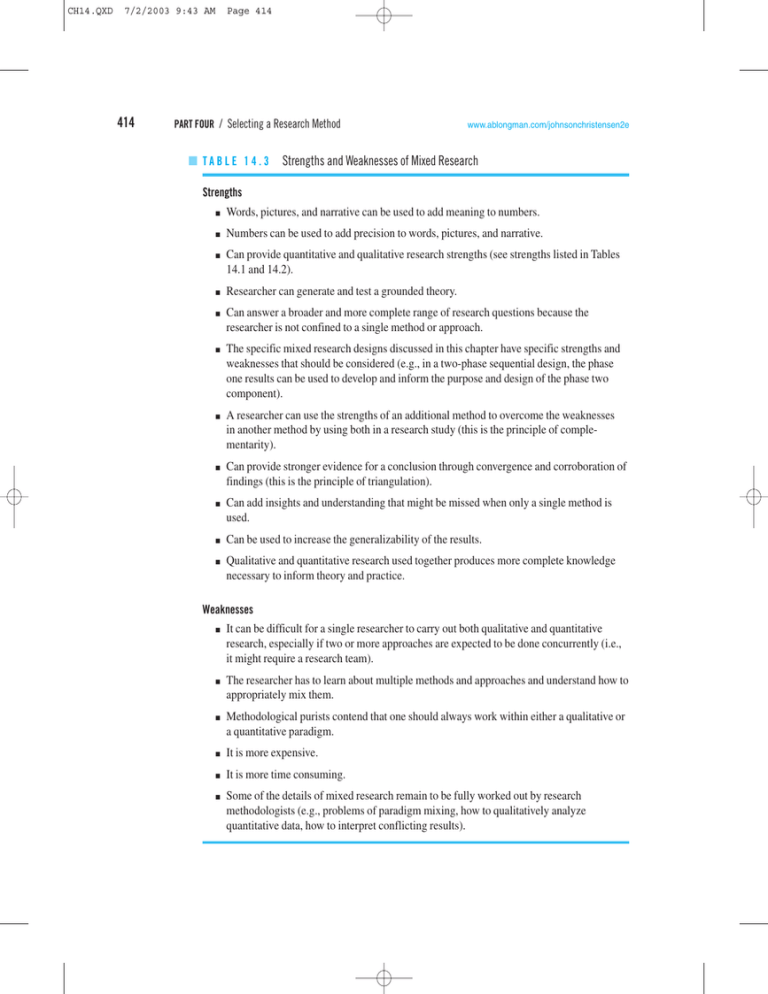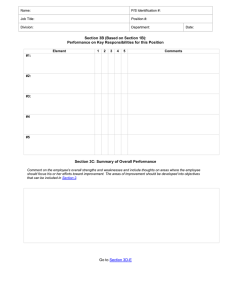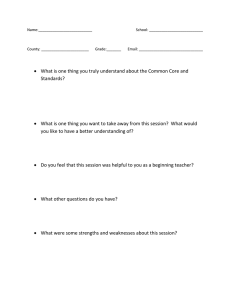TABLE 14.3 Strengths and Weaknesses of Mixed Research
advertisement

CH14.QXD 7/2/2003 9:43 AM 414 Page 414 PART FOUR / Selecting a Research Method ■ TABLE 14.3 www.ablongman.com/johnsonchristensen2e Strengths and Weaknesses of Mixed Research Strengths ■ Words, pictures, and narrative can be used to add meaning to numbers. ■ Numbers can be used to add precision to words, pictures, and narrative. ■ Can provide quantitative and qualitative research strengths (see strengths listed in Tables 14.1 and 14.2). ■ Researcher can generate and test a grounded theory. ■ Can answer a broader and more complete range of research questions because the researcher is not confined to a single method or approach. ■ The specific mixed research designs discussed in this chapter have specific strengths and weaknesses that should be considered (e.g., in a two-phase sequential design, the phase one results can be used to develop and inform the purpose and design of the phase two component). ■ A researcher can use the strengths of an additional method to overcome the weaknesses in another method by using both in a research study (this is the principle of complementarity). ■ Can provide stronger evidence for a conclusion through convergence and corroboration of findings (this is the principle of triangulation). ■ Can add insights and understanding that might be missed when only a single method is used. ■ Can be used to increase the generalizability of the results. ■ Qualitative and quantitative research used together produces more complete knowledge necessary to inform theory and practice. Weaknesses ■ It can be difficult for a single researcher to carry out both qualitative and quantitative research, especially if two or more approaches are expected to be done concurrently (i.e., it might require a research team). ■ The researcher has to learn about multiple methods and approaches and understand how to appropriately mix them. ■ Methodological purists contend that one should always work within either a qualitative or a quantitative paradigm. ■ It is more expensive. ■ It is more time consuming. ■ Some of the details of mixed research remain to be fully worked out by research methodologists (e.g., problems of paradigm mixing, how to qualitatively analyze quantitative data, how to interpret conflicting results).

